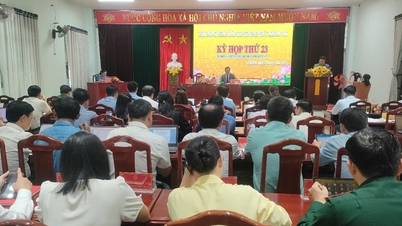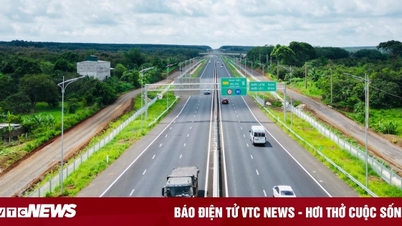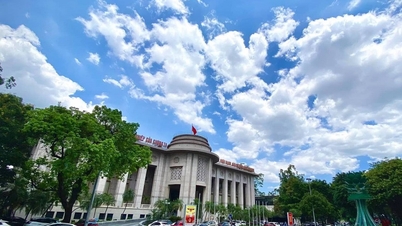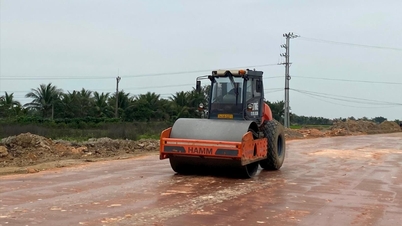That is the affirmation of Mr. Nguyen Ba Hung, Chief Economist of the Asian Development Bank (ADB). Public investment in infrastructure is an important foundation for long-term growth of the Vietnamese economy.
| Public investment 2025: Vietnam solves economic growth problem with infrastructure Ministry of Finance proposes solutions to promote disbursement of public investment capital |
 |
| Mr. Nguyen Ba Hung, Chief Economist of Asian Development Bank (ADB) |
According to the World Economic Forum (WEF), Vietnam's current GDP is about 470 billion USD, ranking 33rd in the world and 67th out of 141 countries in the global competitiveness index. In infrastructure development indicators, Vietnam has achieved relatively good results in digital infrastructure, however, the indicators of transportation and energy still have many limitations, directly affecting the competitiveness of the economy.
In Vietnam, although the infrastructure development index in the logistics sector has shown an improving trend, it has not yet met expectations. Compared to competing countries, domestic infrastructure has not yet made a strong breakthrough to improve its competitive position in the international arena. This shows that infrastructure is still one of the major bottlenecks in improving national competitiveness.
“Currently, the quality of Vietnam’s infrastructure is better than many middle-income countries. But to compete with developed economies in the region, Vietnam needs to increase investment in infrastructure to create a breakthrough,” Mr. Hung recommended.
According to ADB data, in 2018, the domestic economy was short of about 100 billion USD in investment in economic sectors, with the energy sector alone lacking about 8-9 billion USD. On the contrary, information technology and digital infrastructure have made significant progress, but the overall infrastructure serving the comprehensive economy is still in a state of not creating momentum.
Vietnam has identified a number of important strategic orientations on infrastructure, institutions and strategic breakthroughs. However, the implementation process has not yet achieved the expected results. The total value of public investment in infrastructure tends to increase over the years, but the disbursement rate only reaches about 70% - 80% of the budget.
By 2023, the implementation rate has shown a sudden change, but the annual average deficit is still about 20% compared to the budget, equivalent to about 1% of GDP. This shows that if public investment capital can be fully disbursed according to the plan, Vietnam's GDP can increase by about 1% per year.
Some experts believe that the point of concern is the efficiency of capital use. The ICOR index (investment capital utilization coefficient) shows a large gap between the state economic sector and the private economic sector. However, the efficiency of public investment currently has much room for improvement. It is not necessary to increase capital, but just improving the efficiency of capital use can create a significant increase in GDP growth.
Decentralization of public investment to localities is a necessary step, but the implementation process still faces many difficulties. Inadequacies in the procedural process between the central and local levels cause many projects to be delayed, reducing investment efficiency. Therefore, it is necessary to improve transparency in the use of public investment capital, while enhancing the management and implementation capacity of localities.
Besides the challenges, the large infrastructure gap and strong development needs also create great opportunities for Vietnam, especially after the National Assembly approved increasing the public investment budget from 27 billion USD in 2024 to 36 billion USD this year.
 |
| Public investment in infrastructure is not only a driving force for short-term economic growth, but also the foundation for long-term sustainable development (Photo: Ngoc Hau) |
Large-scale infrastructure projects have been identified, including key projects such as the North-South high-speed railway project with an estimated total investment of about 67 billion USD, the Ho Chi Minh City-Can Tho expressway and the national expressway system. These projects not only create short-term growth momentum but also lay the foundation for sustainable development in the long term.
Effective reform and implementation are important factors determining the success of public investment projects. To reform effectively, it is necessary to quickly stabilize the apparatus, shorten implementation time and ensure transparency in investment decisions. At the same time, infrastructure projects need to be designed with high quality and adapt to climate change.
Particularly in Ho Chi Minh City, which is heavily impacted by climate change, Mr. Nguyen Ba Hung said that infrastructure projects need to be built with good quality to be able to operate sustainably over a long period of time. Efficiency in disbursement – from preparation, approval to implementation – is an important factor to ensure success.
At the same time, the National Assembly's approval of a special mechanism is a great opportunity for Ho Chi Minh City to take the lead in infrastructure investment. However, to take advantage of this opportunity, the city needs to have specific measures to ensure effectiveness in implementation, and at the same time, there needs to be close coordination between management levels to avoid the situation of "having capital but not being able to disburse".
Therefore, to mobilize finance for public investment projects, Vietnam needs a more flexible approach instead of relying solely on the state budget. Attracting investment in the form of public-private partnerships (PPP) is an important solution to reduce the financial burden on the budget, while taking advantage of resources from the private sector.
“Public investment in infrastructure is not only a driving force for short-term economic growth, but also a foundation for long-term sustainable development. To succeed, Vietnam needs to ensure transparency, improve management efficiency and attract private resources to create a strong momentum for the economy in the coming period,” affirmed ADB Chief Economist Nguyen Ba Hung.
Source: https://thoibaonganhang.vn/dau-tu-cong-vao-co-so-ha-tang-tao-nen-tang-cho-tang-truong-ben-vung-161334.html




![[Photo] General Secretary To Lam presents the title "Hero of Labor" to the Party Committee, Government and People of Ho Chi Minh City](https://vphoto.vietnam.vn/thumb/1200x675/vietnam/resource/IMAGE/2025/4/30/08a5b9005f644bf993ceafe46583c092)

![[Photo] Flag-raising ceremony to celebrate the 50th anniversary of the Liberation of the South and National Reunification Day](https://vphoto.vietnam.vn/thumb/1200x675/vietnam/resource/IMAGE/2025/4/30/175646f225ff40b7ad24aa6c1517e378)




























![[Photo] Demonstration aircraft and helicopters flying the Party flag and the national flag took off from Bien Hoa airport](https://vphoto.vietnam.vn/thumb/1200x675/vietnam/resource/IMAGE/2025/4/30/b3b28c18f9a7424f9e2b87b0ad581d05)

































































Comment (0)